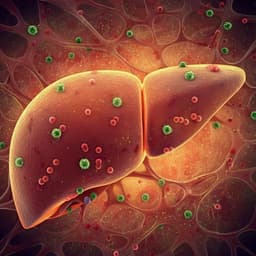
Medicine and Health
Surrounding greenness is associated with lower risk and burden of low birth weight in Iran
S. Luo, Y. Wang, et al.
This groundbreaking study reveals a significant link between prenatal greenspace exposure and low birth weight (LBW) in Iran, analyzing over 4 million live births. The authors found that enhancing greenspace could potentially prevent thousands of LBW births, underscoring the crucial health benefits of greenness, especially in low- and middle-income countries. Conducted by Siqi Luo, Yaqi Wang, Fatemeh Mayvaneh, Helder Relvas, Mohammad Baaghideh, Kai Wang, Yang Yuan, Zhouxin Yin, and Yunquan Zhang.
~3 min • Beginner • English
Related Publications
Explore these studies to deepen your understanding of the subject.







